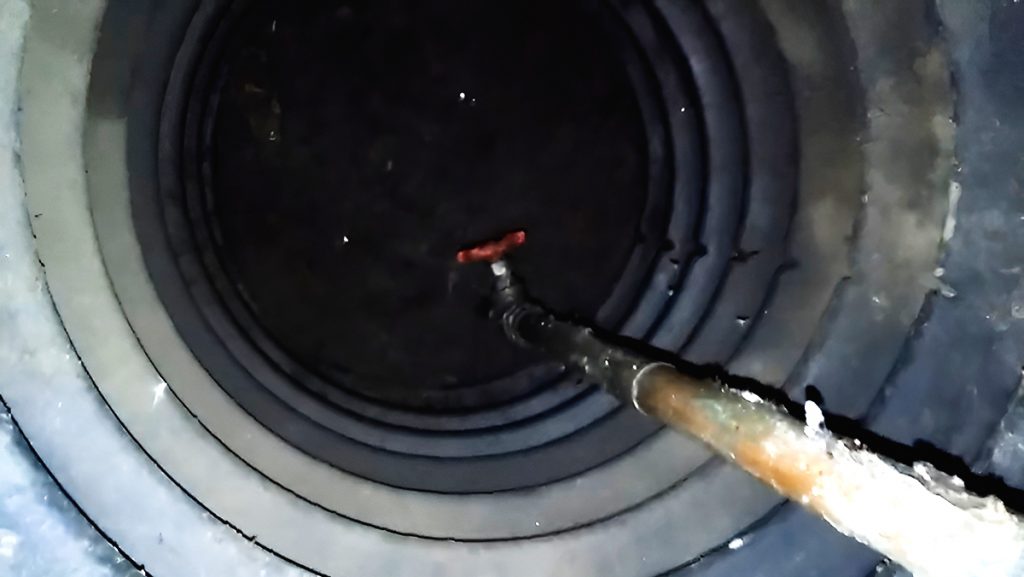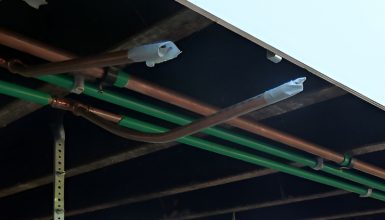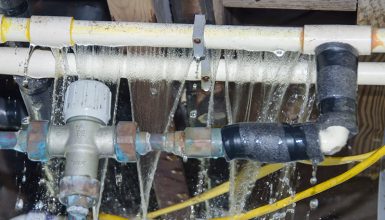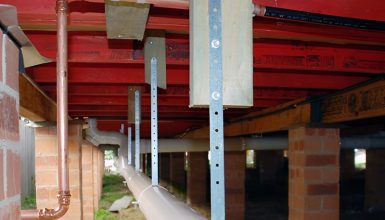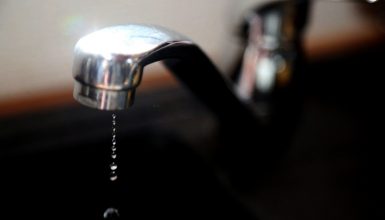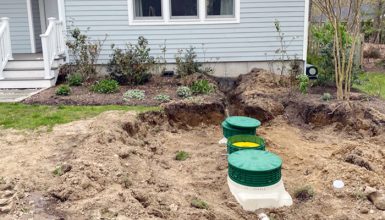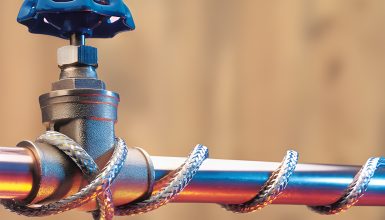The water system in your mobile home is much like any traditional home’s. The main line, your home’s water highway, brings fresh water in. If you’re a bit off the beaten path, it usually comes from a city water source or a well. This main line runs underground and then pops up, typically under your home, connecting to smaller lines. If we stick to our highway analogy, these smaller lines, or ‘off-ramps,’ send water to all the spots you need – your kitchen, your bathroom, you name it.
The key player in this game? The shut-off valve. This guy controls the whole show. When open, it lets water flow freely through your home. But when closed, it stops water right in its tracks. It can be a real day-saver during a plumbing crisis.
Where is The Main Water Shut-Off Valve in a Mobile Home
The location of the main water shut-off valve in a mobile home can vary, but there are a few common places to check:
- Under the Home
Many mobile homes have their main shut-off valve underneath the home, typically near where the water line enters the structure. Look under your home, likely where the water line sneaks into the structure. You may need to access the crawlspace or skirted area under your mobile home to find it.
- Utility Closet
The next possible hideout for this elusive valve could be your utility closet. The main shut-off valve often hangs out in this utility hub or chills in the same closet as the water heater.
- Near the Water Meter
If you’ve hit these spots and still no sign of the valve, it’s time to look around the water meter. Suppose your mobile home is chummy with the municipal water supply. Chances are the shut-off valve is hanging out near the meter.
Don’t hesitate to call in the experts if it’s still eluding you. A local plumber or your mobile home manufacturer can help solve this mystery once and for all.
Tools Needed to Shut Off the Main Water Supply
Let’s talk tools before we dive into shutting off the water supply. Like any superhero needs their trusty sidekick, you’ll need the right tools to help you in your mission.
- Pipe wrench
The first tool you’ll need is a pipe wrench or pliers. You know, those chunky, toothy tools that give you a firm grip. These guys will help you turn the shut-off valve, especially if it’s stubborn.
- Flashlight
Secondly, you’ll need a flashlight. Even if it’s bright and sunny, the underneath of your home can be as dark as a moonless night. So, having a reliable light source is vital to finding your way around. And hey, it also makes you look like a pro!
- Gloves
Finally, don’t forget to wear some suitable, sturdy gloves. Trust me. It can get a bit dirty down there. Plus, a nice pair of gloves can protect your hands from any unexpected sharp edges or creepy crawlies.
Well, there you have it! With these tools, you’re ready to face any water-related challenge your mobile home throws. So, grab your wrench, power on that flashlight, and let’s tackle this task head-on!
Step-by-Step Guide to Shut Off the Main Water Supply
Okay, it’s showtime! You’re armed with the right tools and knowledge. Now let’s walk through the steps to shut off that main water supply.
Step 1: Preparation
First things first, make sure you’re wearing those gloves. We’re not going for a fashion statement here, just good old safety. Got your flashlight and wrench? Excellent! Now, head to where your shut-off valve is located.
Step 2: Turning off the Valve
Found the shut-off valve? Perfect! It should look like a round wheel or a lever. Now, time to flex those muscles a bit. Using your wrench, you’ll turn the valve clockwise (remember: righty-tighty). If it’s a lever-style valve, turn it perpendicular to the pipe. Give it a tight turn, but remember, we’re not trying to Hulk-out on it. We want to shut off the water, not break the valve.
Step 3: Verifying the Water is Off
Now, how do we know if the mission’s successful? Easy. Head back inside and turn on the faucet if the water slows to a dribble and then stops altogether. Congratulations! You’ve successfully turned off your water supply. If the water’s still running like it’s competing in a marathon, don’t fret. Just head back to the shut-off valve and give it another check.
Sometimes, the valve can be a bit of a troublemaker and refuse to budge. If it’s stuck, don’t panic. A little more effort with your wrench should convince it to play along. But remember, we want to use controlled strength here.
Common Problems and Troubleshooting
Even superheroes face a few challenges now and then. So, let’s chat about some common hiccups you might encounter while shutting off your water supply and how to handle them like a champ.
1. The Valve is Stuck
It is a classic. The valve hasn’t been touched and decides to play hard to get. If it refuses to turn, don’t resort to brute force immediately. Instead, try applying a lubricant, like WD-40, wait for a few minutes, then try turning it again. Gentle persistence is the name of the game here.
2. The Valve is Leaking
Notice some water trickling or spraying out from the valve? Well, you might have a leaky valve. First, check if it’s fully closed. You’ll likely need to replace it if it’s already closed and still leaking. This task might require a professional plumber.
3. Can’t Find the Valve
Can’t seem to locate your shut-off valve? It’s okay, it happens. Some mobile homes have them hidden in the most unexpected places. Check under your home, in utility closets, or near your water heater. If you’re still playing hide-and-seek with it, a call to your mobile home manufacturer or a local plumber might be in order.
4. Valve Handle is Broken
If the valve handle is broken or missing, you might still be able to turn it off with pliers. But if that’s a no-go, you’ll need a replacement. Again, this might be a job for a professional.
Turning Your Water Supply Back On
Alright, you’ve managed to turn off the water. But now that the crisis is over, you’re probably wondering how to get the water flowing again. Fear not! The process is as simple as pie. Let’s get that water running!
Step 1: Back to the Valve
Don your gloves again, grab your trusty flashlight, and return to the shut-off valve.
Step 2: Turning the Valve On
Remember how you turned the valve clockwise to shut the water off? Now, you’re going to do just the opposite. Turn the valve counterclockwise (yes, lefty-loosey). If it’s a lever-style valve, you want it parallel to the pipe. Remember, no need for superhero strength here. You want it comfortably open.
Step 3: Checking the Water
Now, head back inside and turn on the faucet. You should see the water start to flow again. At first, it might sputter and spit, maybe even look cloudy. Don’t worry. That’s just air escaping from the lines. It’s normal and should clear up in a minute or two.
Preventive Measures and Maintenance
Now that you’ve got the basics down let’s talk about how to keep your water system in tip-top shape. After all, a stitch in time saves nine, right? Let’s dive into some preventive measures and maintenance tips.
1. Regular Check-ups
Just like you need regular doctor visits, your water system also needs regular check-ups. Take a little time every few months to visually inspect your shut-off valve and the surrounding pipes. Look out for any signs of wear and tear or leaks. Prevention is better than cure!
2. Gentle Handling
Remember, your shut-off valve is not a fan of rough handling. Use firm but controlled strength whenever you’re turning it on or off. Rough turns can cause damage, making it harder to operate when you need it the most.
3. Lubricate
Like a bicycle chain, your valve can benefit from a little lubrication. Apply a bit of WD-40 or similar lubricant once a year to keep it moving smoothly. But remember, a little goes a long way.
4. Seek Professional Help
Stumbled upon a problem that’s beyond your skill set? Don’t hesitate to call in a professional. DIY is fun and empowering, but knowing when to seek help is equally important.
Conclusion
You’ve just learned how to shut off the main water supply in your mobile home. It’s like learning a secret handshake, isn’t it? Now, you can prevent a minor leak from becoming a major indoor flood. And remember to regularly maintain your water system and call a professional when things get too tricky. Thank you for reading!

